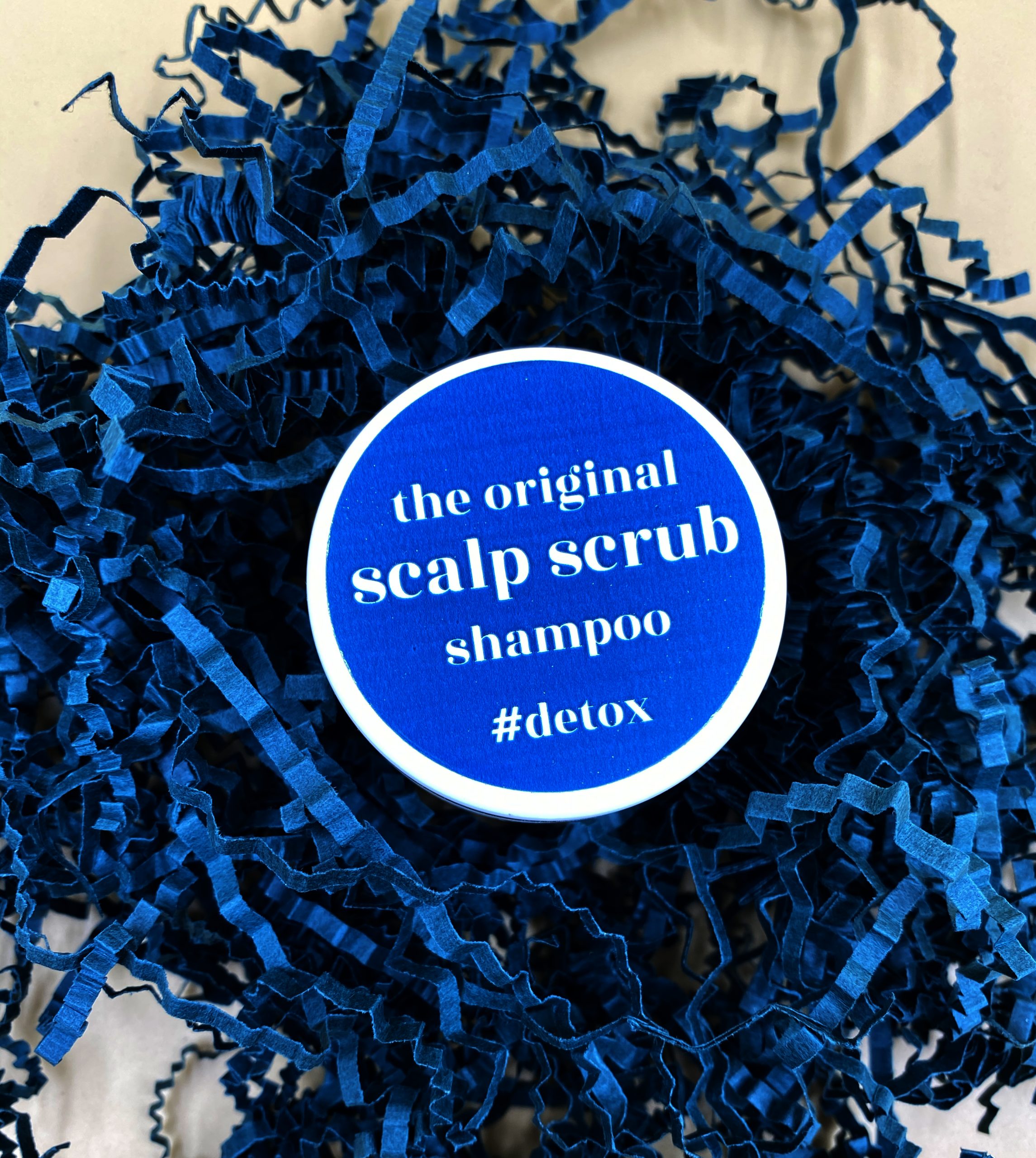
Photo by Emerald Media
Exfoliation isn’t just good for your face—it can help tame a salty scalp, too.
Scalp scrubs are becoming one of the latest hair-care trends, and with good reason. Exfoliating the skin on your head can help remove dead cells, excess oil, and product build-up that can cause irritation, and dandruff.
Desperate for a scalp detox, I grabbed the Purifying Scalp Scrub with Sea Salt I was recently gifted, made by celebrated hair stylist, Christophe Robin.
The Product:
Robin specializes in creating naturally-based products that protect and strengthen hair. He developed the sea salt scrub that doubles as a shampoo after he noticed his clients itching their scalps after color treatments. That inspired him to create his own version of a salt water wash—and voilà, the sea salt scrub was born.
The multi award-winning scalp scrub tops nearly every beauty guru’s list. This year, it earned the title of “best all-around scalp scrub” by New York Magazine, Business Insider, Elle and more.
The formulation is made for all hair types and textures. Though it seems to work particularly well for those that color their hair often, and/or use dry shampoos.
I don’t dye my hair—anymore. But, I do suffer from sensitive skin, and a flaky scalp. I also use hair products to help tame my long, curly hair. Because I only wash my hair a few times per week, I’m conscious of build-up.
Naturally, I was interested in trying the designer product, which is said to cleanse, hydrate and rebalance. However, I was also hesitant. Curly hair needs hydration. Salt is known to absorb moisture. For that reason, I was fearful the shampoo would cause more dryness.
What’s in it?
The scalp scrub contains: salt, sodium laureth sulfate (a foaming agent), water, Butylene glycol, and a bunch of other ingredients that aren’t easy to pronounce.
Two of the first five ingredients—sodium laureth sulfate, and Butylene glycol (an alcohol)—can cause skin irritation. Though, both are known to be safer than the alternatives.
However, the formula is free of parabens, silicones, and colorants. It’s also vegan, and comes in recycled packaging—a definite plus!
Test Run Results:
I loved the smell as soon as I popped open the scrub. It’s got a sweet perfume-y, slightly citrusy aroma. It sort of chemically—like most shampoos—which mildly stung my eyes and nose.
The scrub looks (almost) good enough to eat. It seems incredibly creamy—yet also foamy.
I’ve learned hard lessons from hair products, and have lost hair as a result. So, I started with a “patch test.” I separated a small portion of hair in the back of my head, and applied it there.
It’s thick, and gritty with large chunks of sea salt. It’s creamy when first applied, but after gently rubbing in the solution, the salt dissolves and it begins to create suds. I gently rubbed it in for 30-60 seconds—concentrating it on my scalp—rinsed it with warm water, and applied conditioner.
I immediately felt a significant difference. My hair feel lighter. But, I could tell it was drier than usual. I applied extra product (which seems counter-intuitive), and a little hemp seed oil from root-to-tip. After that, my hair felt silkier than it has in awhile. It also smelled great well into the next day.
I’m satisfied with the test run, and feel the scrub did soothe my scalp and cleanse my hair of build-up. However, it hasn’t changed my life.
The scrub would compliment a hydrating mask so well! For that reason, I plan to only use the remainder of it after an egg+oil olive+honey hair mask, which can be tough to wash out.
I only used a small amount, about a teaspoon, so I predict the .75mL travel size I received will last at least another one-two more washes. If you’re like me, this is only needed once every few weeks—which makes the $19-$53 price tag worthwhile.
For those with normal or oily hair, or those that use a lot of product—I imagine this to be a complete game changer. Otherwise, I recommend using ultra hydrating products before and/or after the sea salt scrub, or finding a curly hair-specific formula.
Products are chosen at the discretion of individual staff members and are not paid sponsorships.



Leave a Reply